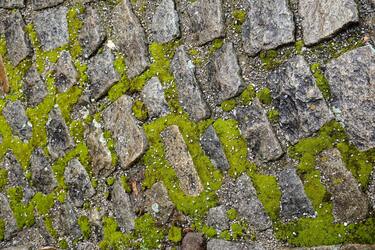How to deal with moss on the lawn: effective tips from experts

Moss is a common problem in many lawns depending on personal preference. Moss thrives in shady areas and in poorly drained areas where grass has difficulty growing.
To effectively control moss on the lawn, it is important to eliminate the main causes of its appearance. Specialised moss killers can provide short-term relief, but it can return if the root problems are not addressed.
Common problems and solutions
1. Compaction and poor drainage:
If you notice puddles that do not disappear for a long time, this is an indication of drainage problems. In autumn, you can reduce lawn compaction with a hollow-tine aerator. In small areas, you can use a garden fork to make holes and fill them with sharp sand to improve drainage.
Read also: Gardeners explained how to cut hydrangeas so that they bloom lushly next year
2. Building up straw:
Thatch is a layer of dead grass and moss that builds up on the lawn, contributing to compaction and poor grass growth. Removing thatch can be done with a lawn rake or mechanical scarifier. This process allows the grass to have more room to grow.
3. Poor grass growth:
If the grass in the area grows slowly, it becomes vulnerable to moss infestation. Encourage vigorous grass growth by feeding it with a suitable lawn fertiliser in autumn and spring.
4. Excessive shade:
In areas with deep shade, consider using grass seed or lawn turf specifically designed for these conditions. Alternatively, you can replace grass with ground cover plants or opt for hard landscaping.
5. Mowing too short:
If the grass is cut too short, gaps that moss and other unwanted plants can easily penetrate are created. Maintain a good grass cover by avoiding cutting the lawn too short.
6. Acidic soils:
Moss thrives in acidic soil with low pH levels. Check the pH of the soil with a simple kit and add lime if necessary to increase the acidity level.
Earlier, we told you what you need to know about plants that should not be grown with tomatoes, as they can attract pests, reduce nutrients, or make tomatoes sick.
If you want to get the latest news about the war and events in Ukraine, subscribe to our Telegram channel!
